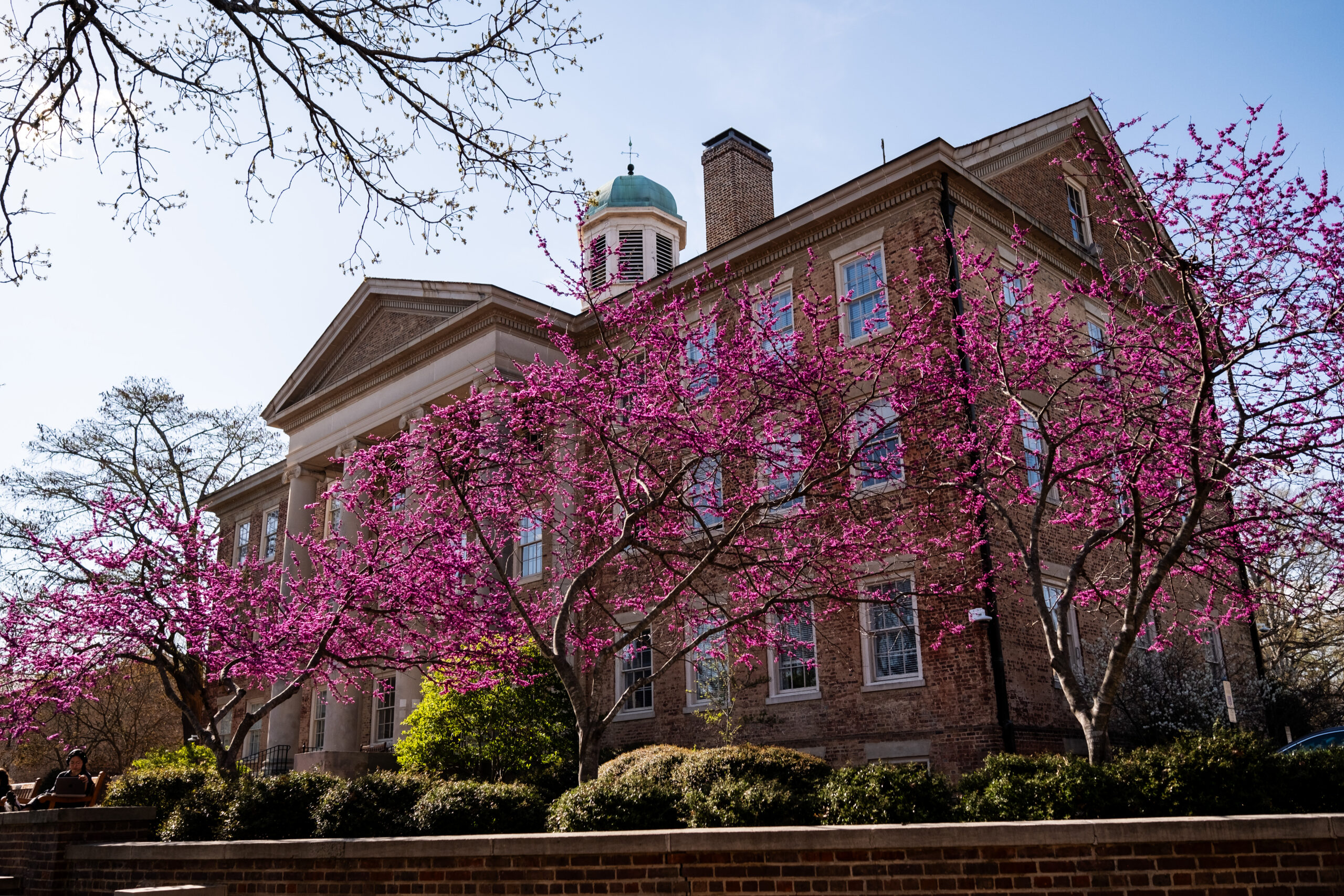
I AM A MAN Plaza, adjacent to the Clayborn Temple, the site of the 1968 strike by Black sanitation workers. The strike for higher wages and improved working conditions brought Martin Luther King Jr. to Memphis to march in solidarity with the workers’ labor struggle.
Written by Karen Stevenson ’79, a participant on the Morehead-Cain Civil Rights tour of the South in April 2024. The alumna is a U.S. Magistrate Judge for the Central District of California.
Anthony Bourdain, chef and intrepid traveler, said, “Travel isn’t always pretty. It isn’t always comfortable. Sometimes it hurts, it even breaks your heart. But that’s okay. The journey changes you; it should change you.” For me, the Morehead-Cain Civil Rights tour of the South did all that, and more.
Even before we began the trip, it was clear this would be much more than an interesting long weekend with fellow Morehead-Cain Alumni and guests.
This was largely due to the thoughtful curation by the Morehead-Cain staff and our ISDI tour guides. We joined in several pre-travel webinars: a session to introduce the tour staff and get to know fellow travelers; a research presentation by Adam Hasan ’19, a trip participant, on the Martin Luther King, Jr. Papers Project at Stanford University’s King Institute; and a conversation with Morehead-Cain Scholars who spent their Civic Collaboration summer working on public policy projects in Birmingham and Memphis.
The logistics were carefully planned for each city. The pacing allowed space for reflection so that we didn’t have to rush from place to place. Our local tour guides were colorful, longtime residents of the communities we visited. They shared not just history but also present-day challenges facing these cities.
Montgomery, the state capital of Alabama and where our journey began, feels oddly vacant downtown.
Dexter Avenue Baptist Church, the only church where Martin Luther King Jr. ever served as senior pastor, stands in the shadow of the Alabama capitol with its statue of Jefferson Davis, the first and only president of the Confederate States of America. We drove through the once-vibrant Black community on the “west side” that has been ravaged by poverty, neglect, and an interstate highway that bisected the community.

Dexter Avenue Baptist Church in Montgomery, Alabama.
Montgomery sits on the Alabama River and was once a major slave market. Tens of thousands of enslaved men, women, and children were marched in shackles from ships docked on the river up through a tunnel directly to the central market to be sold at the slave market. That tunnel still exists. The Equal Justice Initiative’s Legacy Museum in Montgomery depicts the brutality and magnitude of the North American slave trade, tracing a direct line of racial injustice and brutality right through to present-day mass incarceration.
From the Legacy Museum, we moved on to the National Memorial for Peace and Justice, which honors the thousands of individuals killed by lynching across the United States. The Memorial also recognizes the work of acknowledgment and reconciliation that many communities undertake today. We even found a plaque honoring Manly McCauley, a young Black man lynched in 1898 by a mob outside Chapel Hill. We ended the afternoon in the restful Freedom Monument Sculpture Garden, a seventeen-acre outdoor space on the banks of the Alabama River, shaded by trees and featuring sculpture and carved works by Black and indigenous artists.

From left to right: A plaque at the Equal Justice Initiative’s National Memorial for Peace and Justice recognizing the lynching of Manly McCauley outside Chapel Hill in 1898; statue of Rosa Parks in Legacy Plaza in Montgomery; and a street marker identifying where a slave warehouse once stood in downtown Montgomery. (Photos courtesy of Karen Stevenson ’79)
A truly special part of the trip was the opportunity to engage with the history in private settings with witnesses to the national catharsis of the civil rights years.
Taylor Branch ’68, Pulitzer Prize-winning author of the seminal trilogy on the civil rights era, America in the King Years, traveled with us throughout Montgomery as our study guide. Taylor shared his encyclopedic knowledge with us in Q&A sessions after private dinners that stretched into the night. He stood with us in the formerly segregated Montgomery bus station that is now the Freedom Riders Museum, answering questions. He even signed some of his books in the museum’s bookstore (and my own copy on the bus)!

Taylor Branch ’68 speaking to the attendees after dinner in Montgomery.
In Birmingham, we shared a deeply moving private lunch with Reverend Dr. Carolyn Maull McKinstry, who survived the Sixteenth Street Baptist Church bombing that killed four little girls, including one of her friends, on Sunday, September 15, 1963. Reverend Dr. McKinstry shared her recollections of that tragic morning and her long journey to recover from that trauma.
In Memphis, after a guided tour of the National Civil Rights Museum at the Lorraine Motel, where Dr. Martin Luther King Jr. was assassinated, and a Sunday soul food lunch at the renowned Four Way restaurant, we moved on to the Stax Museum of American Soul Music.
Our day concluded with cocktails and a sumptuous Southern dinner at the Memphis home of Pitt Hyde and Barbara Rosser Hyde ’83, where Morehead-Cain President Chris Bradford answered questions about the Morehead-Cain selection process and spoke about the Foundation’s innovative projects to build “college as it should be.”

Barbara Rosser Hyde ’83 greets the group at her home in Memphis for a farewell dinner on April 14, 2024.
With a warm Memphis breeze wafting around us, we thanked the Hydes by closing the evening with a rousing chorus of “Hark the Sound!”
Anthony Bourdain was right. Four powerful days traveling together: it’s hard not to be changed by this journey.
View photo albums from the trip by day.
The next trip will be to London from September 22 to 29, 2024, to celebrate the 55th anniversary of the British Morehead-Cain Program. Learn more about group travel through Morehead-Cain Alumni Journeys.


